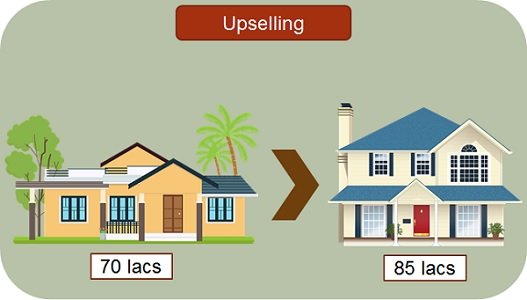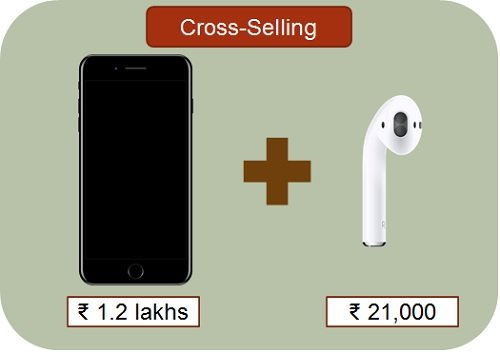Definition: Suggestive Selling refers to an approach that companies use nowadays to promote sales. In this, the sales executives interpose to add complementary items to their initial purchase or persuade them to purchase a higher-priced item. They do so by presenting its features and comparing it with the item they were originally interested to buy. It aims at increasing the purchase value of the client and business revenue. Suggestive Selling is the best way of driving incremental sales.
For this, the sales personnel often suggest the customers include such items in their cart that might complement their initial purchase. In this, the sales executive asks customers to add small and minimum value item or service which accompanies the primary purchase.
The basic principle behind this form of selling is that when a person buys a product, they are psychologically ready to purchase an additional item which is less expensive and complementary at the same time.
For instance:
Suppose a lady bought 4 sarees from a store, the salesman can interpose a matching fall to the sarees. This is suggestive selling.
It occurs when a seller actively encourages one item over another to a consumer. Suggestive Selling is one of the most cost-effective methods of promoting sales. It can take place in three forms:
- Physically, i.e. in person: When you go to McDonald’s and order a burger, the representative asks you ‘Would you like to have Fries?‘
- Over the phone: Airtel sales representatives generally ask you to upgrade your wifi plan, with better speed and data.
- Over the internet: When you buy items online using Amazon, it generally shows the ‘Frequently Bought Together’ section.
For Example
Suppose a person buys Samsung mobile phone worth Rs. 45000 and the salesperson suggests buying earbuds for Rs. 2000. This is what we call suggestive selling.
Points to Note
- Keep in mind that suggestive selling should not be pushy and annoying. Rather it has to be a simple recommendation about what the customer would require along with the actual purchase. So, the technique involves wisely encouraging the purchase of the additional items at the right time of the initial sale.
- One should also note that the price of the complementary item should not be more than the main purchase. And when the customer is pushed to a better version of the product they are initially interested in, the price difference between the two should be minimum.
- In restaurants, they practice a unique merchandising opportunity as all the guests usually talk to the host of the sale, who by way of suggestive selling, can influence the buying decision of the guests.
Types
- Upselling: It is a sales strategy in which the seller encourages customers to buy the more expensive or premium versions of the product.

- Cross-Selling: A sales technique in which the sales representative interposes an additional or complementary product or service to an existing customer.

Guidelines for Effective Suggestive Selling
When the seller uses suggestive selling, they actually help the customers and clients discover what the seller is having. One should note that the customers usually appreciate it when the server expresses interest and assist them in making better choices.
- To be successful in suggestive selling, it is pertinent to know the items in your store or menu.
- He/she must be ready to answer all the questions that the customer may have, with respect to specifications or quality.
- The recommendation should be made after the customer has committed to buying but prior to making payment.
- Make recommendations from the customer’s perspective.
- The suggestion has to be definite and positive.
- Demonstrate the item you are suggesting.
Methods
- Offering related and complimentary items.
- Recommending larger quantities
- Calling attention to special sales opportunities.
Why suggestive selling?
The ultimate goal of suggestive selling is to increase the overall sales. If the company practices suggestive selling, it can raise the average revenue size by 30%.
A word from Business Jargons
Suggestive Selling is confined to what the salesman does at the time of serving customers, to sell goods in addition to those asked for by the customer. It is an effective strategy for increasing sales while providing valuable information to the customer. No matter if they purchase more or not, customers like suggestive selling, as they feel that the seller is making efforts to provide relevant information.

Leave a Reply